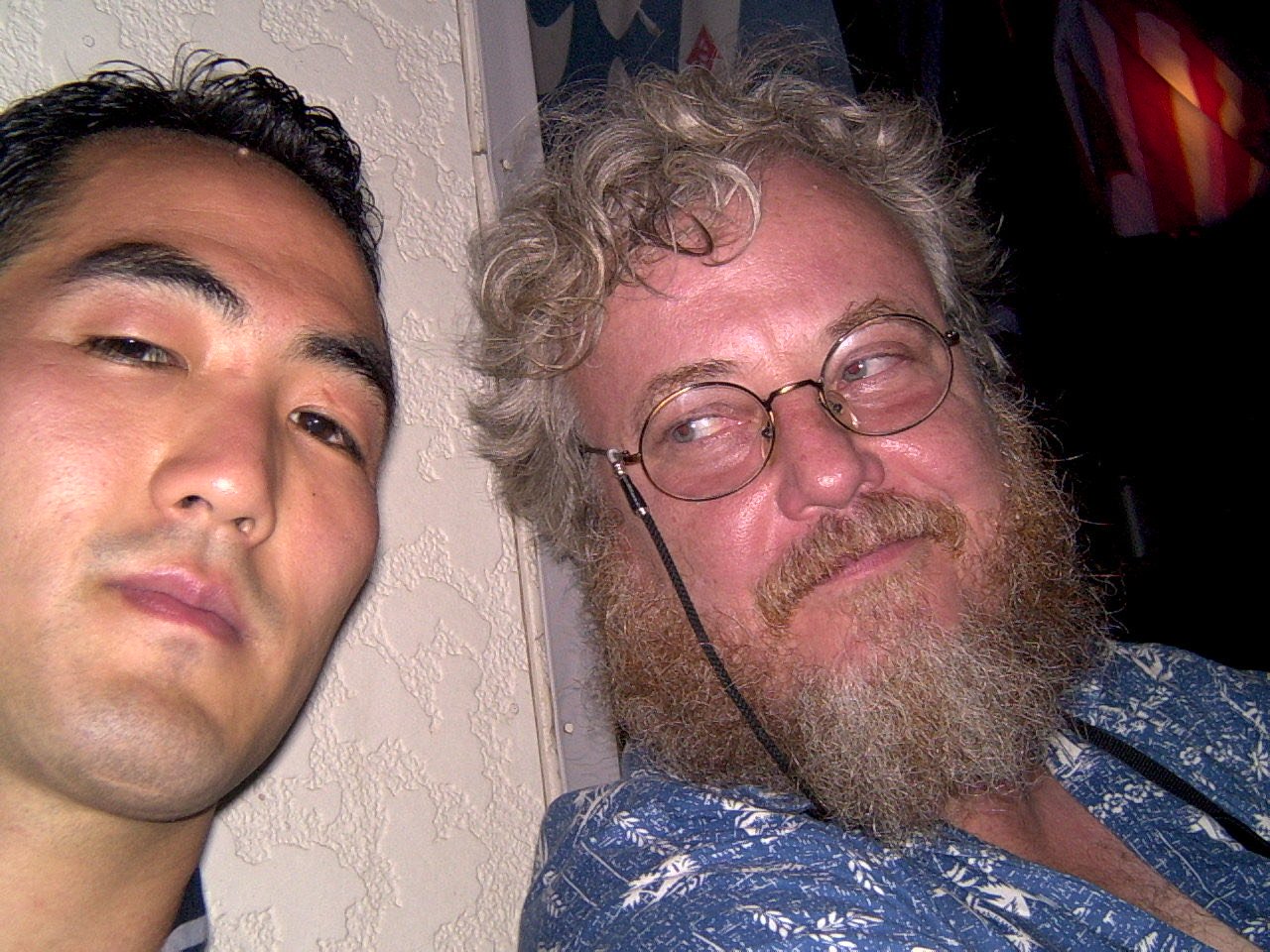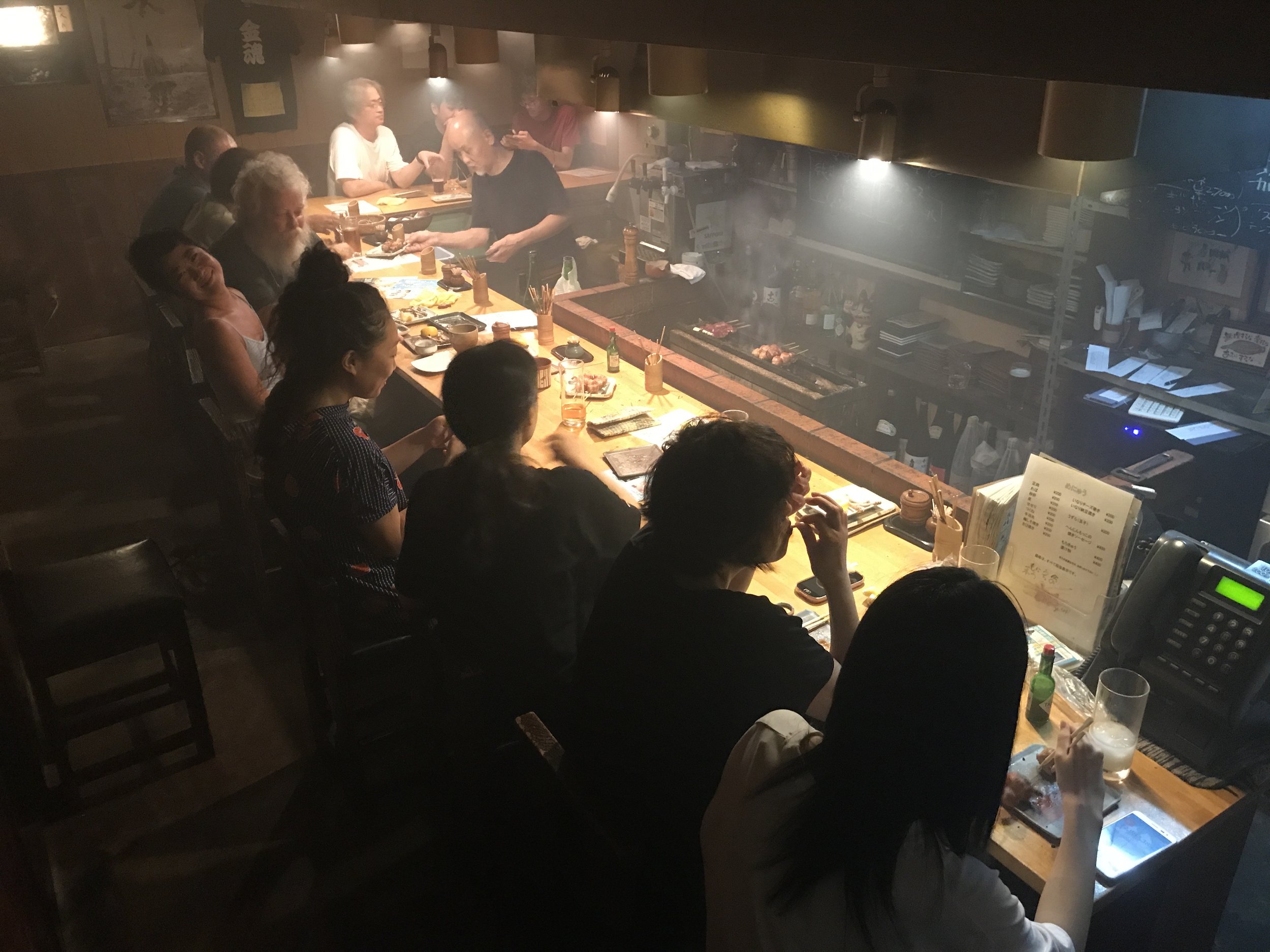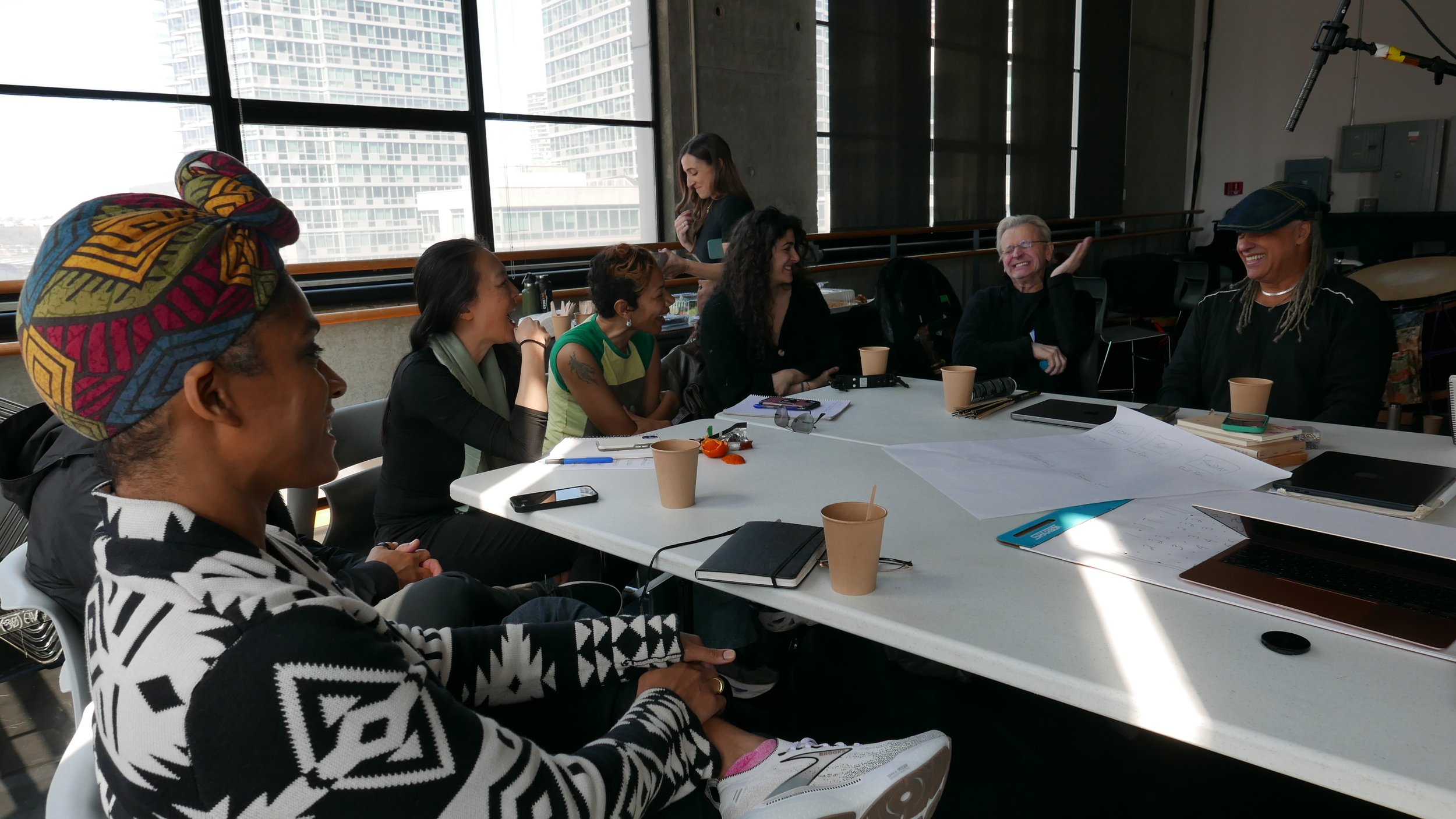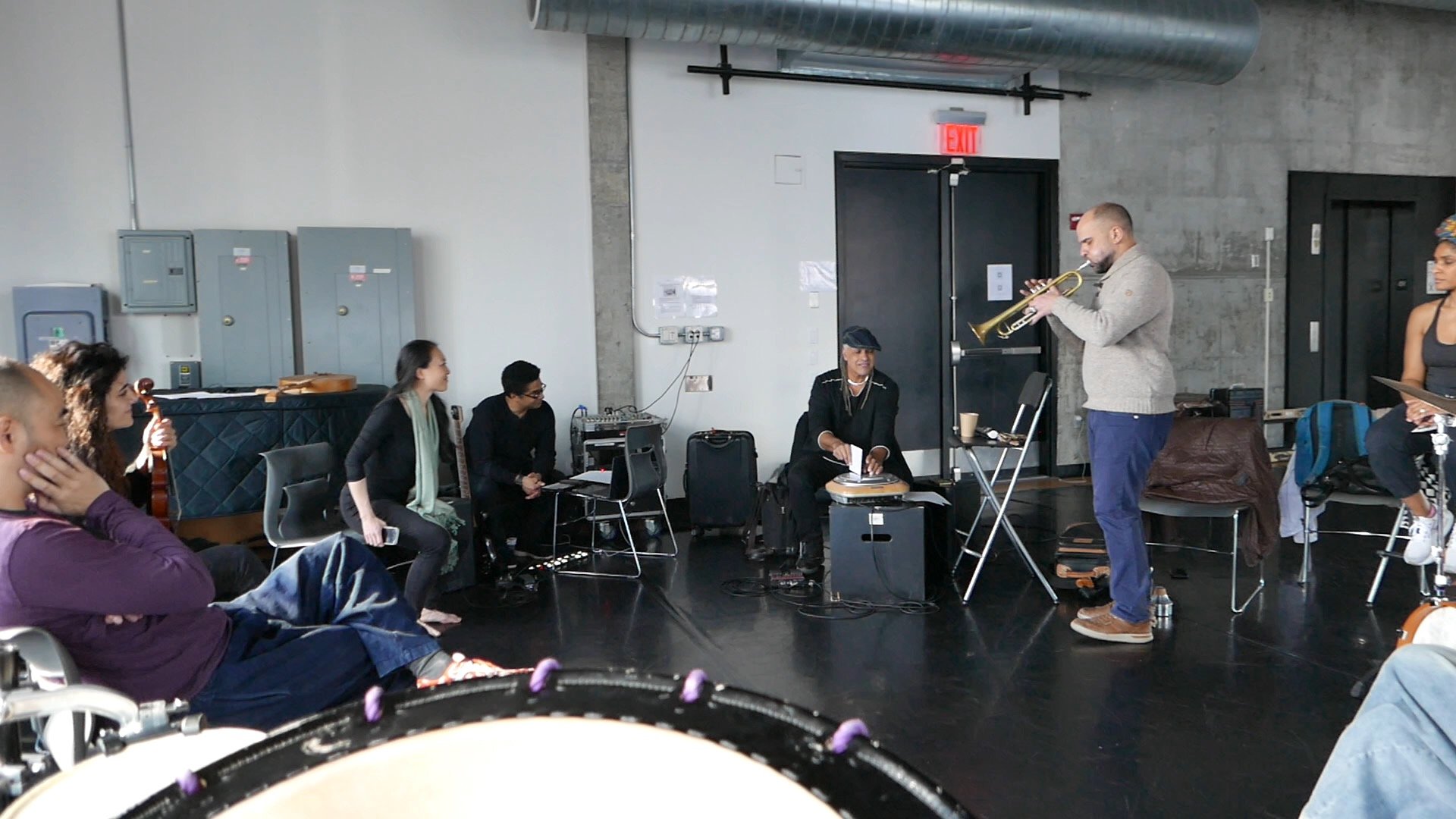Johnny Wales Remembrance
Kaoru Watanabe
I write this with joy and gratitude.
Johnny Wales, who passed away on September 6, 2024, was a sculptor, painter, puppeteer, furniture designer, animator, historian, collector, and a million other things. His art was his trade and his way of life. He was passionate, rigorous, creative, inventive, thoughtful and playful. He could also be temperamental and hold a grudge for years. His greatest joy was his wife Chibo, and their dog Kyla, and living deep in rural Sado Island. You can read about his life and see some of his artwork here: https://www.kodo.or.jp/en/info_en/50493 and here: https://www.johnny-wales.com/Site/Home.html
And check out this animation he made with a very rare opportunity to hear me play tenor saxophone (!!) https://www.youtube.com/watch?v=k4SwkQZKX_I
Here are some of my thoughts and memories of Johnny:
I first moved to Sado in 1998. I was entering a transformative time, going from being a non-Japanese-speaking American kid who played jazz flute and saxophone to someone who identifies culturally and professionally as a Japanese artist. After a grueling two-year apprenticeship, I found myself touring the world with Kodo, one of the premier performing arts ensembles in Japan. Meeting Johnny during this time was a godsend. He was someone from North America (a proud son of Toronto) who had wholly devoted himself to studying Japanese traditions and culture while maintaining a strong sense of identity and individualism in his work. Johnny was part of the Kodo circle, having known all the players from the very beginning and touring with them, doing lighting and managing in the early years, and writing their English language newsletter, Kodo Beat, for decades. So, he understood intimately better than anyone what I was going through and was able to not only provide friendship, perspective, and advice, but also his home, along with Marcus' restaurant Oasiss (yes with two S's), a place where I could speak English and briefly escape the high-pressure environment of being in Kodo.
A very opinionated guy, he unhesitatingly offered his critiques - both exuberant praise and sharp criticism - about anything and everything from my performances to the woman I was with, down to what I was wearing. Nothing was off limits! I always knew he would give it to me straight - the good and the bad.
Perhaps because he was an outsider in Sado, his curiosity led to accumulating encyclopedia-like knowledge of Sado history, culture, flora, and fauna. He loved showing Sado off. He actively encouraged his Sado friends to speak Sadoben—the local dialect that people often shed to seem less "country" or unsophisticated -- and celebrate the profound beauty of rural and old ways of life.
Besides the countless hangs at his place and around Sado, I remember clearly the few times we hung out in Tokyo. One day, we visited the Teien Museum, an incredible Art Deco museum in the Minato district of Tokyo, and the beautiful and historic Canadian Embassy designed by Raymond Moriyama. Johnny provided a professional-level guided tour throughout, offering insight into the intersections between Western and Japanese design and architecture. We ended up in Shonben Yokocho (piss alley) - a jumble of narrow streets with rows of tiny drinking establishments that’s been hosting Tokyo nightlife since the Meiji era. We drank beer, ate comfort food, and chatted about music, art, women, and politics. At one point, I couldn't help but overhear the two guys sitting beside us enthusiastically talking about a music festival on an island featuring taiko drumming. I interrupted, asking if he was talking about Earth Celebration, Kodo’s annual music festival. They said yes, and it turns out they went in 2005, the first year I was the festival's artistic director. It was a fantastic coincidence, but it made sense, considering I was with Johnny. It was such a special day for me - with so many of my worlds colliding: Western and Japanese art, Tokyo, Sado, and being able to share it with a close friend who could put everything into context and perspective.
In 2018, Wes Anderson's Isle of Dogs premiered at the Berlin Film Festival, and Wes asked me to come out for it to hang out and perform. I saw on Facebook that Johnny was also at the festival with the film crew he had worked with on a different film shot in Sado. My former Kodo teammate Tsubasa Hori was also joining me from Antwerp to perform, so we had a fun Sado entourage exploring Berlin together for a day.
In 2019, I wanted to take Yurie to my old stomping grounds, so we visited Sado. We did the customary Johnny tour - visiting Chokoji temple, the pitch-black dragonflies and old Noh theater stage at Daizen Shrine, eating at his (and my) favorite yakitori place, Kinpuku, and staying with him, Chibo, and Kayla. We bought some fireworks on the way home from dinner and lit them in his driveway, his eyes reflecting the brilliant sparks.











